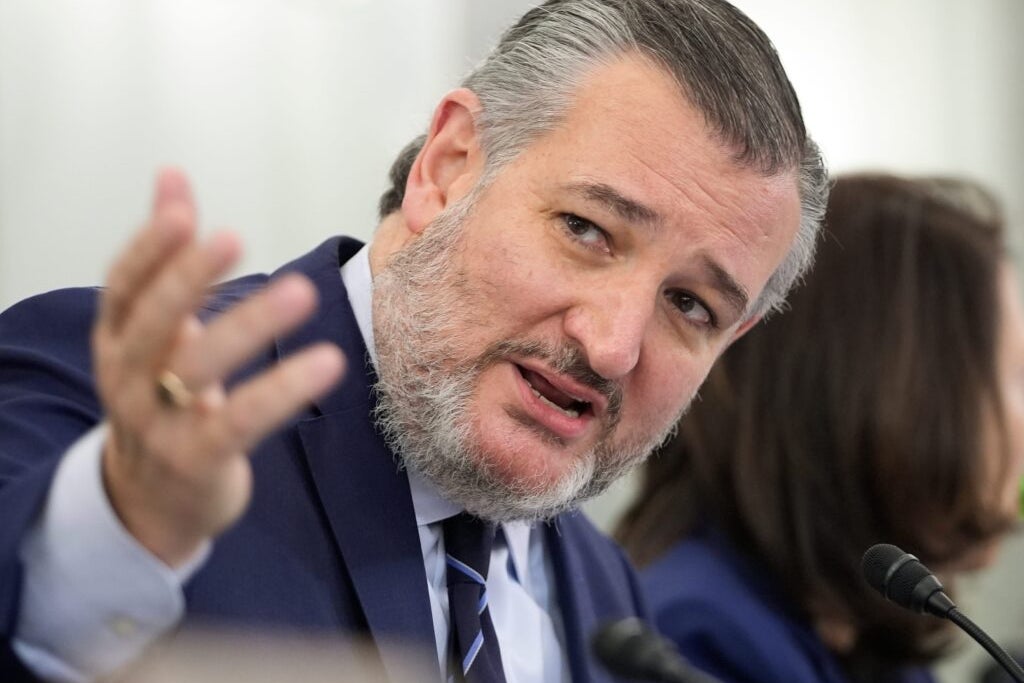Ted Cruz Pushes Trump To Raise Pilot Retirement Age To 67 — Airline Union Warns Of Safety Risks
The debate over how long airline pilots should be allowed to fly is heating up again. Sen. Ted Cruz (R-TX) is pressing President Donald Trump to support a global change that would raise the mandatory retirement age for commercial pilots from 65 to 67.
While some industry leaders argue the move could ease staffing shortages, pilot unions warn it could come with safety risks.
Cruz Urges U.S. Leadership on Global Policy
Cruz, as Chairman of the Senate Committee on Commerce, Science, and Transportation, last week, sent a letter to President Trump urging him to support the issue at this week’s United Nations aviation meeting in Montreal. The International Civil Aviation Organization, which sets standards followed by most of the world’s aviation regulators, is considering whether to raise the age limit, according to Reuters.
Don’t Miss:
“America should lead on the international stage in support of raising, or even abolishing, the pilot retirement age,” Cruz wrote. He argued the current cap discriminantly forces thousands of experienced pilots into early retirement every year.
The International Air Transport Association, which represents about 350 airlines worldwide, has already voiced support for the change. Reuters reports that countries including Canada, Australia, Brazil, Japan, New Zealand, and the U.K. have backed the proposal as well.
Airline Unions Push Back
The Air Line Pilots Association, the largest pilots’ union in the U.S., strongly opposes extending the retirement age.
“The United States is the global leader in aviation safety, and we should resist any attempts to arbitrarily make changes to the regulatory framework that has helped us achieve this record,” ALPA said in a statement on Aug. 28.
The group has also warned that raising the age could complicate airline scheduling, create training challenges, and force renegotiation of existing contracts, according to Reuters.
Trending: Microsoft’s Climate Innovation Fund Just Backed This Farmland Manager — Accredited Investors Can Join the Same Fund
FAA and Safety Concerns
The Federal Aviation Administration has taken a cautious stance. In a letter to Congress last year, former FAA Administrator Mike Whitaker said lawmakers should allow the agency to conduct further research before changing the retirement rule, according to Reuters.
“It is crucial to provide the agency an opportunity to conduct research and determine mitigations,” Whitaker wrote. Reuters also reports that former Transportation Secretary Pete Buttigieg echoed that concern in a separate letter, warning there was “no data to support such increase” and that raising the age would put the U.S. out of alignment with international standards.
Currently, international rules bar pilots over 65 from flying outside their home country. If the U.S. were to raise its limit to 67 without a global agreement, older pilots would be restricted to domestic routes.
See Also: The ECG Hasn’t Changed in 100 Years — This AI Upgrade Could Help Detect Heart Disease Years Earlier
Balancing Experience and Safety
Supporters of the change, including some lawmakers in both parties, argue that keeping pilots in the cockpit longer would help address staffing shortages and allow seasoned captains to mentor younger fliers. The Regional Airline Association has also endorsed the move, pointing to the benefits of retaining experienced aviators.
But opponents counter that aviation safety must remain the top priority. Congress rejected a similar push last year after lawmakers cited the FAA’s call for scientific review, according to Reuters.
As ICAO begins its discussions in Montreal, the U.S. has yet to take an official position. Whether Trump and future U.S. leaders support the proposal could play a key role in shaping the outcome — and in determining whether older pilots remain in the skies.
Read Next: $100k+ in investable assets? Match with a fiduciary advisor for free to learn how you can maximize your retirement and save on taxes – no cost, no obligation.
Image: Imagn Images


